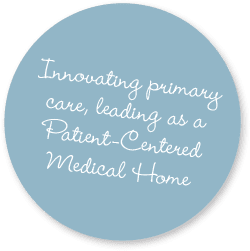As you know, the past eighteen months have brought unprecedented challenges – for all of us.
We recognize your frustration. We are frustrated too. But now more than ever we need to work together, to be kind to one another, and to remember that we are all in this together.
Like so many healthcare organizations throughout our state, we are experiencing extreme staffing shortages. It’s then coupled with an ongoing, and still raging, pandemic that requires additional time for patient screening, immense provider resources, and staff isolation after exposures. As you can imagine, COVID-19 makes a staffing shortage worse at a time when patient volume is increasing exponentially.
It’s why you may be placed on hold when you call or wait a day for us to get back to you. It’s why we recommend calling a few days earlier for a prescription refill or suggest that you call in the mid-afternoon when our phone lines are less busy. It’s why you may have to wait a little longer for certain preventative services or to schedule a routine follow up with your provider. It’s why your appointment might be cancelled if your provider becomes ill or has to quarantine due to COVID exposure.
It’s why we’re writing to you today – to ask for your patience and understanding.
On top of all this, our phone system is a problem. We’ve heard you, and we are working on it. Engineers from our phone carrier and IT department are working on improvements to system performance and our call-tree structure to help reduce delays in calls getting through.
We know how frustrating this is but ultimately, it is not our staff’s fault. They are working tirelessly, and we would like to humbly ask that you keep this in mind and approach our people with kindness and understanding. A friendly smile or a kind word would go a long way.
Most importantly, we want you to know that we are working very hard every day to take care of all of your medical needs. It is not only our mission but our greatest honor and privilege to serve each one of you.
Thank you for your patience and understanding as we continue to navigate this unprecedentedly difficult time.
– DFD Russell Medical Center Leadership Team


